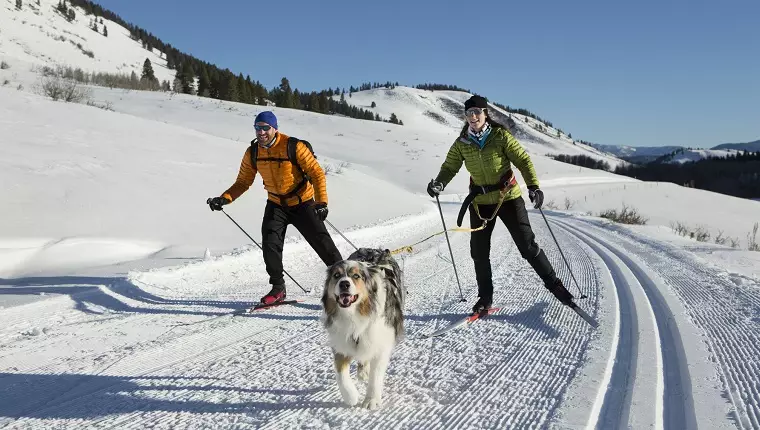As the winter season rolls in, many pet owners find themselves grappling with the challenge of maintaining an active lifestyle for their energetic dogs. The cold, often snowy weather generally means fewer outdoor activities, which can lead both pets and their owners to become somewhat sedentary. However, for those looking to turn the winter chill into an opportunity for fun and exercise, skijoring emerges as a captivating option. This activity not only keeps pets active but also enhances the bond between dogs and their human companions in a uniquely engaging way.
So, what exactly is skijoring? Originating in the Nordic countries, skijoring blends the exhilarating experience of cross-country skiing with the companionship of a dog. In this dynamic sport, a skier is harnessed to a dog, allowing the canine to pull their human through snowy trails. While it may sound simple, skijoring requires a specific set of skills and preparation from both the dog and the owner. The anticipated thrill is accompanied by the need for the skier to maintain balance and control, which can lead to both comedic and adventurous moments—such as being pulled unexpectedly through a snowbank!
Before embarking on a skijoring adventure, proper equipment is essential. Dogs need a sturdy harness that fits well and allows for full range of motion, and it’s advisable to use a bungee lead that can absorb shock and prevent sudden jerks. For the human skier, quality ski gear is just as crucial—not only for safety but also for comfort during the activity. Knowledge of basic skiing techniques, particularly a style that promotes agility, will greatly enhance the experience. Aspiring skijorers can benefit from reviewing the mechanics of cross-country skiing to prepare adequately.
Not all dogs are created equal when it comes to participating in skijoring. Larger, high-energy breeds historically excel in this activity. Northern breeds like Siberian Huskies and Alaskan Malamutes are naturally inclined to pull and thrive in winter conditions. However, even larger breeds, such as Retrievers and German Shepherds, can excel if they have an inclination towards running and pulling. While small dog breeds might find the experience overwhelming—and sometimes hazardous—it’s crucial to understand your dog’s temperament and athletic capacity. For many small breeds, the cheers from the sidelines may be the most enjoyable part of the skijoring scene.
A well-trained dog is the star of any successful skijoring outing. Effective communication and understanding between the dog and owner are paramount. Basic commands, leash manners, and the ability to respond to cues are essential. Prior to hitting the trails, it’s wise for dog owners to spend time ensuring their furry athletes are comfortable with the harness and have developed a fondness for the experience of being attached to a skier.
Before diving into skijoring, pet owners must consider their dog’s health. Consulting with a veterinarian is a prudent step to ensure that your dog is physically fit and able to handle the activity. In addition, protecting your pet from the harsh winter conditions should be at the forefront of preparation. Just as humans layer up for warmth, dogs may also need appropriate clothing, like coats or booties, to shield them from the elements.
Skijoring presents an exhilarating alternative to the usual winter routine, offering both exercise and enjoyment for dogs and their owners alike. The unique blend of skiing and companionship creates shared memories while also fostering a healthier lifestyle during those cold months. If you’re ready to make the leap into this thrilling winter adventure, gear up, train your dog, and prepare for some frosty fun, away from the winter blues! Whether you’re on the trails or watching from the sidelines, the joy of skijoring may just create cherished winter moments for both you and your furry friend.

